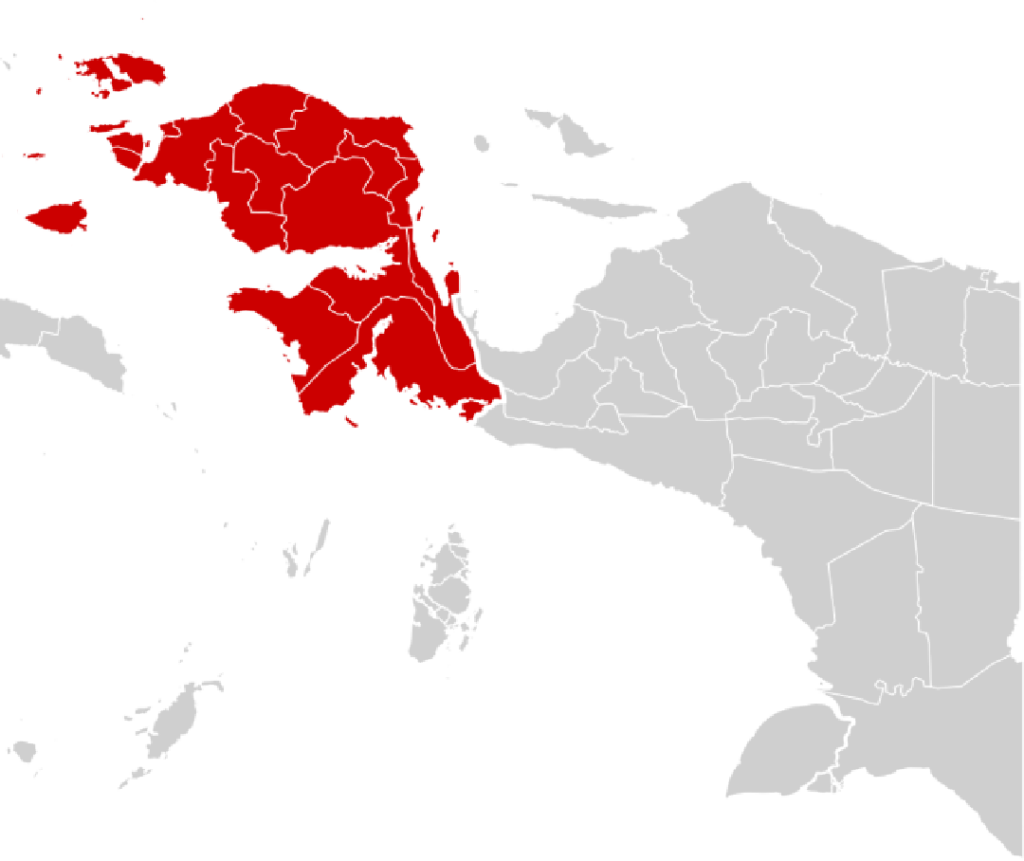In many Papuan villages, the dawn begins not only with the song of birds but also with the faint rustling of leaves, the clink of mortars, and the preparing of betel quid—a mixture of pinang (areca nut), sirih (betel leaf or inflorescence), and kapur (slaked lime). Villagers gather in shaded verandas, exchange gossip, laugh, and chew. The red-stained spit marks their territories, a visible trace of a ritual that is deeply ingrained in daily life and social custom.
This practice is more than habit—it is identity. It bridges generations, marking rites of passage, social visits, and customary ceremonies. In Papua, many see chewing pinang as part of hospitality, respect, and traditional belonging. But in recent years, voices from the medical community and media have begun questioning: is this cherished ritual harboring hidden dangers?
The Unsettling Label: “Dirty” and Health-Threatening
Some outsiders and health advocates now label the chewing of pinang, sirih, and lime as “unclean” — not merely because red stains mar walls and pavements, but because the habit may damage the body from within. According to a report by BBC Indonesia, the tradition — though culturally valued — carries serious health risks, including the rising incidence of oral cancer, with some cases now being detected among Papua’s rural population. The article notes that the number of oral cancer cases, once difficult to detect or unnoticed, is now beginning to surface as communities with limited medical infrastructure receive diagnoses.
Moreover, a separate feature by ABC Indonesia draws attention to Papua’s lack of vigilance toward oral cancer. Even though chewing traditions are widespread, data on mouth cancer in the region are sparse, and awareness among both the public and health systems remains low. The article points out that many cases may go unrecorded until the disease is advanced. In short: a deeply rooted cultural habit is colliding with modern medical realities and raising urgent questions about harm, dignity, and prevention.
How Chewing Works: From Mouth Ritual to Risk Factor
To understand the danger, one must inspect the components. Pinang (areca nut) contains alkaloids—especially arecoline—that stimulate the mouth and produce mild euphoria. This effect is magnified when kapur (slaked lime) is added. The lime raises the pH, increasing the absorption of alkaloids, but also causes tissue irritation by abrasion. Over time, repeated chewing and the abrasive action of lime and coarse nut fragments damage the delicate lining of the mouth.
Scientific studies confirm the link. A comprehensive review published in PMC (2024) shows that betel quid (the combination of areca nut, betel leaf, and slaked lime, with or without tobacco) is strongly associated with oral potentially malignant disorders (OPMDs) and oral cancers. The International Agency for Research on Cancer (IARC) classifies areca nut (without tobacco) as a Group 1 carcinogen, meaning it is carcinogenic to humans.
Another academic study, “Influence of betel nut chewing on oral microbiome in Papua,” points out that habitual chewing alters the oral microbiome, increasing inflammation and susceptibility to diseases such as periodontitis and oral cancer.
In Indonesia generally, a recent article tracking prevalence and risk factors of oral potentially malignant disorders found that 12.6% of participants had a history of areca nut/betel quid chewing—the second largest risk factor after smoking (14.5%).
Hence, what starts as a cultural ritual becomes, over years and decades, a cumulative assault on the tissues of the mouth.
Stories Behind the Stains
In a small Papua coastal settlement, a man named Yoman (not his real name) begins his day by lighting a fire, preparing his betel mixture, and chewing. In his seventies, his teeth are stained deep red; his gums recede; speaking is harder, but the practice remains. He recalls that elders taught him to chew—“for strength, for greeting visitors, for solace.” Yet now, each cough hints at something deeper, and visits to distant clinics reveal lesions on his tongue.
In neighboring villages, mothers hand the same red chew to teenagers, who believe the ritual helps digestion, calms nerves, or gives social standing. The ritual is so normalized that few question its health implications until the disease has advanced.
These individual stories mirror a systemic pattern: low awareness, weak medical access, and late detection. In Papua Barat (West Papua), health professionals have long warned about the rising threat of mouth cancer tied to chewing sirih. Local doctors describe cases of advanced tumors, diagnosed only when pain or speech difficulty becomes severe. According to the ABC Indonesia piece, the “lack of vigilance” in Papua exacerbates late detection.
One doctor quoted by BBC describes how red lesions, ulcerations, or fibrous bands appear in areas where quid is habitually placed—precisely where tissues receive long-term trauma. The article notes that many such lesions have been found in remote districts, previously uncounted in health statistics.
Why the Habit Is So Entrenched
What makes breaking this ritual so difficult is that chewing pinang is not just a habit—it’s woven into Papua’s cultural fabric. It is offered to guests, used in bride price, embedded in ceremonies, and processed in daily social interaction. The red stains and spittle may be unsightly to outsiders, but to locals, they are part of the landscape.
Adding to the difficulty, public health campaigns on oral cancer are sparse in Papua. Clinics are far, health education is limited, and diagnostic infrastructure is weak. In many cases, individuals only visit health posts when symptoms like pain or bleeding become onslaughts — by which time the disease has progressed. In short, the health system in many Papuan areas is underprepared for a cancer burden linked to a cultural practice.
Public Health and Moral Reckoning
Calling the practice “dirty” is not merely a rhetorical flourish; it reflects two dimensions: (1) the visible scarlet spittle and stained environments, and (2) the hidden stain on human health when cancer takes root. But this label must be handled with care—cultural sensitivity demands that public health messaging avoid shame and instead frame risk, dignity, and empowerment.
Public health advocates argue for education, screening, and harm reduction rather than blunt bans. Dr. Elizabeth Fitriana Sari, a researcher in dental health, emphasizes that oral cancer is one of few cancers where early detection matters enormously—small lesions can be treated if caught early. In her work, she has advocated training dental professionals in Indonesia, Papua, and Papua New Guinea to perform routine oral screening, especially in chewing communities.
Screening must be accompanied by culturally respectful education: explaining how repeated trauma, lime abrasion, and alkaloid exposure raise risk over years. Communities should be offered alternatives or rituals that preserve symbolic value without carcinogenic harm.
Toward Change: Possible Paths
One path is gradual behavior change. Some communities in Southeast Asia have reduced lime content, used softer nut varieties, or limited chewing frequency. Others practice intermittent “quit days” or substitution with noncarcinogenic oral stimulants. Research into harm minimization may yield versions of quid that lower cancer risk while retaining cultural aspects.
Another path is community-based screening and early detection. Mobile clinics visiting remote Papuan districts could examine oral mucosa, detect premalignant lesions, and refer patients early. A network of trained health workers could spread awareness, distribute leaflets, and hold local workshops.
Third, policy and institutional support are vital. The provincial health offices must integrate oral cancer into their cancer control programs. Funding is needed for pathology labs, referrals, and cancer therapy. Collaboration with NGOs, universities, and international health agencies could help bring technology like teledentistry or portable screening kits.
Crucially, messaging must be respectful: not attacking culture, but inviting reflection. The question to communities is not “give up identity,” but “protect the sacred mouths of your elders and children.”
Conclusion
The tradition of chewing pinang, sirih, and lime in Papua is deeply cultural, symbolizing identity, hospitality, and belonging. Yet behind its social value, the practice poses serious health threats, particularly oral cancer. The visible red stains on roads and walls reflect a deeper, hidden stain on public health. Papua faces a crucial choice: to continue without awareness, or to adapt through education, early detection, and culturally sensitive health campaigns. Preserving tradition while protecting lives is the key to ensuring that the next generation inherits culture without inheriting preventable disease.


